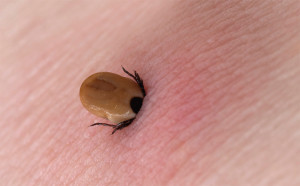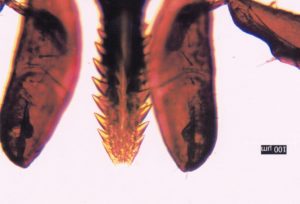 Have you ever taken a match to a tick that was biting you? What happened? With tick season upon us, are you prepared to deal with ticks should you have the unfortunate experience of having one latch on to you or your pet? Do you know how to remove a tick properly?
Have you ever taken a match to a tick that was biting you? What happened? With tick season upon us, are you prepared to deal with ticks should you have the unfortunate experience of having one latch on to you or your pet? Do you know how to remove a tick properly?
There is a ton of misinformation out there about how to remove a tick. Some people say you should apply alcohol, baby oil, or petroleum jelly to smother it and make it let go. Some think you should burn it with a freshly blown out match forcing it to pull its mouth out of your skin. Search the internet and there is no shortage of bad ideas. Not just bad ideas, but dangerous ideas.
Burning or Smothering a Tick Can Hurt You
A tick’s natural response to fear is to spew out of its mouth, prematurely infecting you with whatever bacteria or parasite it happens to be carrying. Given that it takes at least 24 hours of being attached to you before you can be infected by a tick, it is always advisable that you safely and slowly remove the tick with pointy tweezers or needle nose pliers. Pulling straight out to avoid breaking the tick’s mouth parts. Do not hurt or tear the tick, it could lead to bacteria and viruses infecting your bite. Watch the video below to see exactly how it is done.
Tick Disposal
Once you safely remove a tick it’s a good idea to get a sense of whether that tick had a chance to feed on you and what kind of tick it is. You can identify the tick yourself with the tick identification chart from the Tick Encounter Resource Center. The chart will also help you see if the tick had a chance to feed. If it is discovered you have had an encounter with the deer tick (black-legged tick), then you can make a decision on what to do next.
What to Do with a Safely Removed Tick
You can’t be certain of the tick you removed has had time to transmit any disease. Also not all deer ticks are carriers of Lyme disease. You could send the tick in to have it tested, and even then, you still may not know if you have transmitted the disease until you have symptoms. Know the symptoms of Lyme disease and watch for them.
Instead of disposing of the tick, tape it to an index card with the date and location. You can also place it in a sealed bag or container with a teaspoon of rubbing alcohol. Hang on to the tick for 6 months or so just in case some unusual symptoms appear. If you have identified the tick and are looking to be rid of it, you can simply flush the tick down the toilet. Watch carefully and make sure it goes down, ticks are avid climbers.
Sprays offered by reputable barrier tick control companies are proven to prevent ticks from invading your yard. With the prevalence of Lyme disease and other tick-borne illnesses, barrier tick treatment is your best answer for keeping your family protected.


